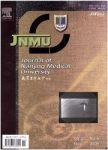Do reactive oxygen species damage or protect the heart in ischemia and reperfusion?Analysis on experimental and clinical data
作者机构:Cardiology Research InstituteTomsk National Research Medical Centerthe Russian Academy of SciencesTomskTomsk Region 634012Russia Department of PhysiologyHebei Medical UniversityShijiazhuangHebei 050017China Department of Physiology and PathophysiologyNational Key Discipline of Cell BiologySchool of Basic Medicinethe Fourth Military Medical UniversityXi'anShaanxi 710032China The Branch of the Institute of Bioorganic ChemistryRussian Academy of SciencesPushchinoMoscow Oblast 142290Russia Department of Normal PhysiologyBelarusian State Medical UniversityMinsk 220083Belarus
出 版 物:《The Journal of Biomedical Research》 (生物医学研究杂志(英文版))
年 卷 期:2023年第37卷第4期
页 面:255-267页
核心收录:
学科分类:1002[医学-临床医学] 100201[医学-内科学(含:心血管病、血液病、呼吸系病、消化系病、内分泌与代谢病、肾病、风湿病、传染病)] 10[医学]
基 金:supported by state assignment 122020300042-4
主 题:reactive oxygen species free radicals antioxidants heart reperfusion patients
摘 要:The role of reactive oxygen species(ROS)in ischemic and reperfusion(I/R)injury of the heart has been discussed for more than 40 *** has been demonstrated that reperfusion triggers a multiple increase in free radical generation in the isolated *** were found to have the ability to mitigate I/R injury of the ***,it is unclear whether their cardioprotective effect truly depends on the decrease of ROS levels in myocardial *** high doses and high concentrations of antioxidants were experimentally used,it is highly likely that the cardioprotective effect of antioxidants depends on their interaction not only with free radicals but also with other *** has been demonstrated that the antioxidant N-2-mercaptopropionyl glycine or NDPH oxidase knockout abolished the cardioprotective effect of ischemic ***,there is evidence that ROS protect the heart against the I/R injury.



